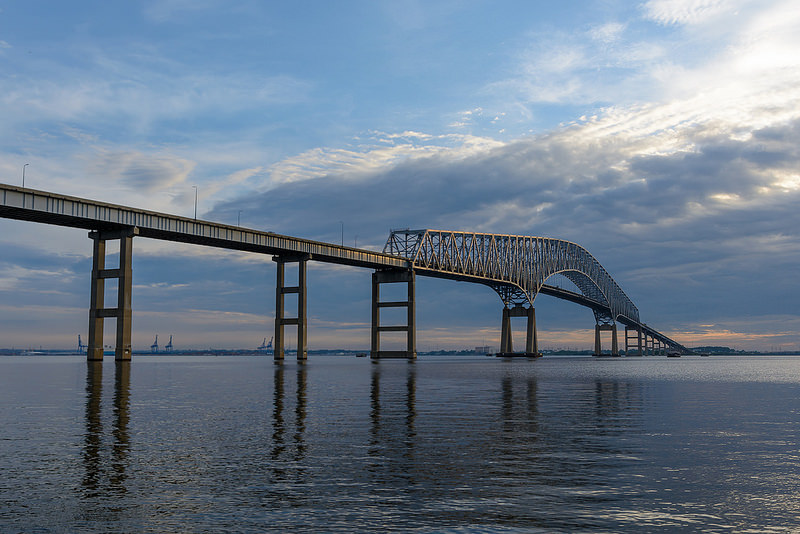History of Baltimore’s Francis Scott Key Bridge
By CASSIE PEO
Capital News Service
Baltimore’s Francis Scott Key Bridge collapsed early Tuesday morning after a support column was struck by a cargo ship, sending several cars into the Patapsco River. A search-and-rescue operation was launched and Gov. Wes Moore declared a state of emergency.
Here’s what you should know about the Francis Scott Key Bridge:
History of the bridge’s name
The bridge was named after Francis Scott Key, the American lawyer who wrote the lyrics of the Star Spangled Banner.
The site of the bridge is believed to be within 100 yards of where Key saw the bombing of Fort McHenry on Sept. 12, 1814. The American flag was raised on Sept. 14, 1814 to celebrate the key victory over British forces, which scholars believe inspired the words “broad stripes and bright stars” in the national anthem.
Bridge construction
Construction for the 1.6-mile-long Francis Scott Key Bridge started in 1972 and it opened to traffic on March 23, 1977. The New York Times reported that the bridge cost $141 million to build, which is roughly $743 million in today’s dollars.
In the early 1960s, the Baltimore Harbor Tunnel had reached its traffic capacity and motorists encountered heavy congestion and delays almost daily during rush hours. The state concluded that there was a need for a second harbor crossing and started on plans for a single-tube tunnel under the Patapsco River, but price proposals were substantially higher than the engineering estimates. Officials then drafted an alternative concept of a four-lane bridge which would become the final link for the Baltimore Beltway I-695, according to the Maryland Transportation Authority.
The steel bridge is the outermost of three toll crossings of Baltimore’s Harbor. Including its connecting approaches, the bridge project is 10.9 miles in length. Other structures along the beltway include a dual-span drawbridge over Curtis Creek and two parallel bridge structures that carry traffic over Bear Creek near Bethlehem Steel’s Sparrows Point plant, according to MDTA.
How many people use the bridge?
The bridge carried more than 12.4 million passenger and commercial vehicles in 2023, according to a Maryland state government report issued last November.
The Key Bridge allows for more traffic lanes than the Baltimore Harbor Tunnel and has lower operating and maintenance costs. In addition, it provides a route across the Baltimore Harbor for vehicles transporting hazardous materials, which are prohibited from both the Baltimore Harbor and Fort McHenry tunnels, according to MDTA.
Along with the Fort McHenry and Baltimore Harbor Tunnels, the Key Bridge provides convenient and safe transportation for local and interstate traffic.
Impact
With the collapse of the Key Bridge, vessel traffic in and out of the Port of Baltimore has been suspended.
Maryland’s Port of Baltimore handled a record 52.3 million tons of foreign cargo and 11.7 million tons of general cargo in 2023, according to a statement by Gov. Wes Moore last month. It ranks first in the nation’s ports for volume of autos and light trucks, handling about 847,000 cars and light trucks in 2023. The Port of Baltimore generates about 15,300 direct jobs, with nearly 140,000 jobs linked to port activities.

Baltimore Post-Examiner is run by a creative cadre of dedicated journalists – some who worked at the Washington Post, Baltimore Examiner and other regional and national publications. It’s the Post-Examiner because we love the play on the word “Post” but we are also hoping to answer that question: What’s next after newspapers? We see a lot of websites come and go – and many simply are not making it for various reasons. We have been a model of success since we launched in 2012 with “a little bit of everything” and we aim to continue to break that cycle of websites coming and going.

